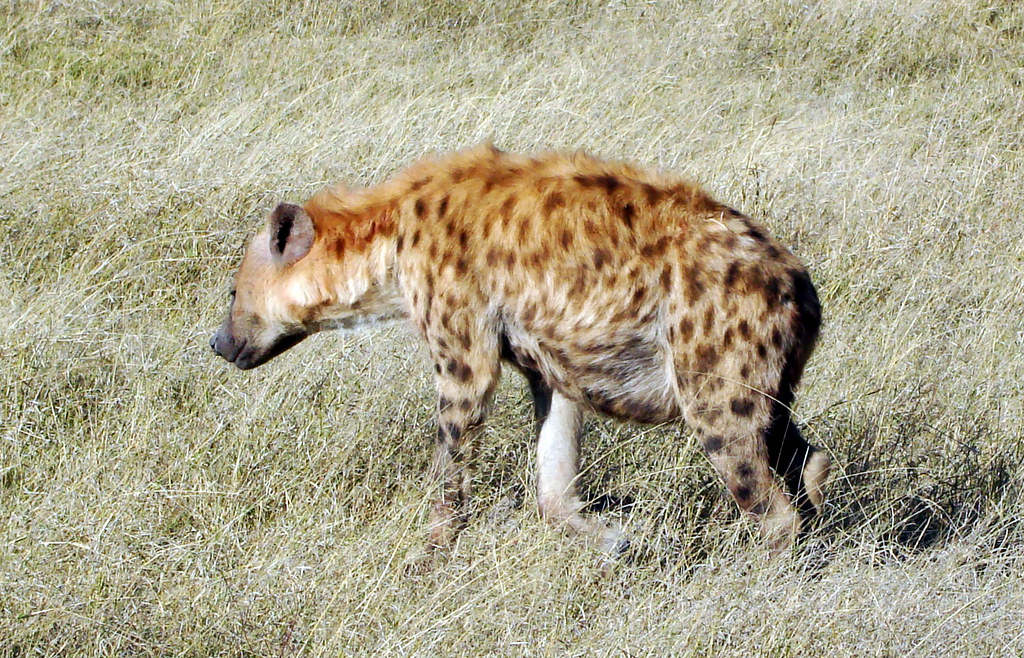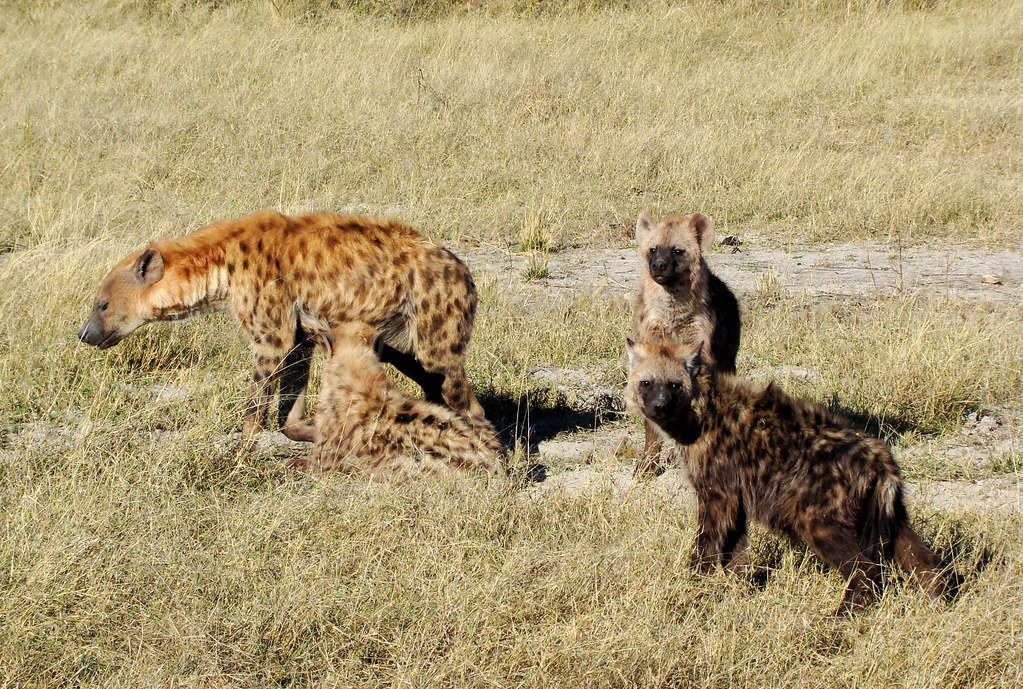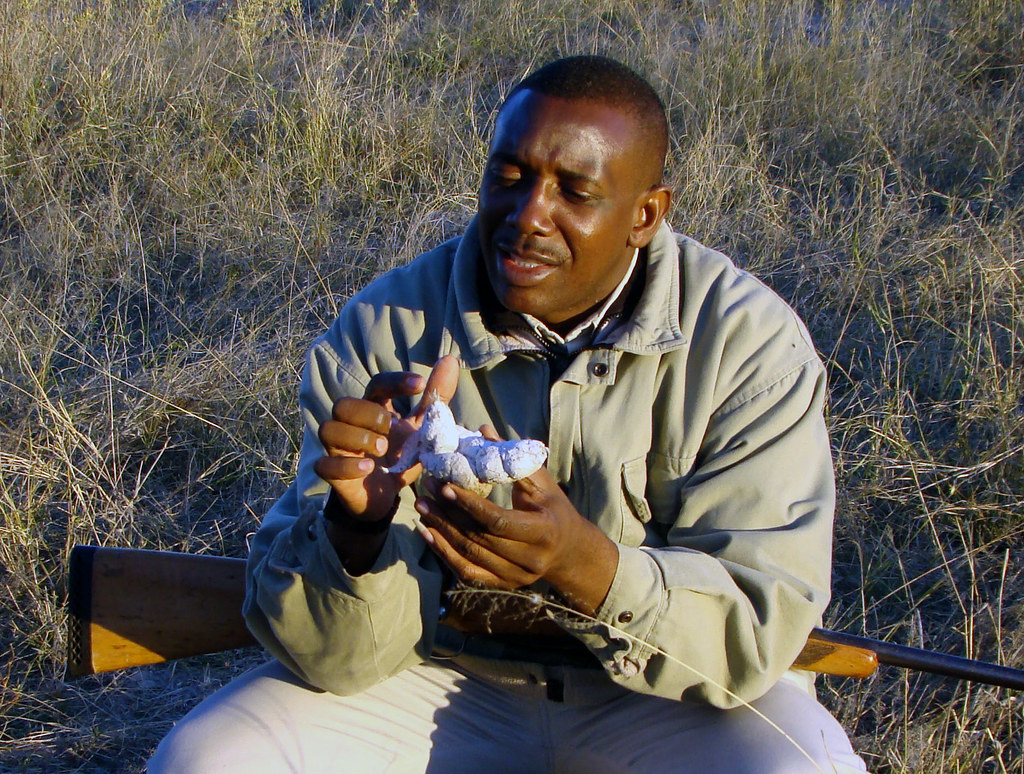Spotted Hyena (Crocuta crocuta)
In a clearing near the airstrip of Stanley’s Camp, located in the Okavango Delta of Botswana, we encountered a clan of spotted hyenas (Crocuta crocuta).
From a distance we could see some standing sentry in every direction while others napped in the tall dry grass of the savannah.
Though their silhouette is more canine, their fluffy fur coat suggests their feline roots.
Our guide, Poniso, knew right away that they had just eaten; observing the red blood coating their necks and legs with their heavy bellies hanging low to the ground.
The quiet lazy mood indicates that there was enough for everyone, even sufficient to produce rich milk for young cubs. Spotted hyena milk has the highest protein content of any terrestrial carnivore, second only to polar bear milk.
Cubs shed their brownish-black coat at age two to three months and then they develop the spotted coat.
Hyenas are well-equipped predators. They have the second most acidic digestive system in the animal kingdom, after the crocodile, allowing them to tolerate bacteria from carrion. Their strong jaws are capable of eating entire animals, pulverizing bones, horns, and teeth. Their scat is chalky white, filled with the calcium from the bones.
Completing the eco-cycle, the African Leopard Tortoise eats this dung to fortify its shell.
Though their skulking profile probably contributes to the hyena’s sinister reputation, they looked like real pussycats to me.









